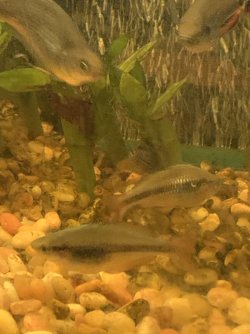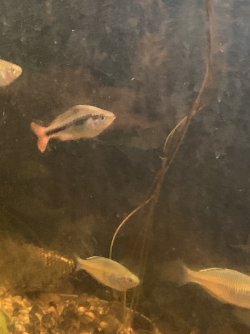These have been in my tank for over 6 months
These are supposed to be juvenile yellow axlerodi… everything has been the same for the last 6 months… water is what it is ( whole house softener… I know… I know…. ) Anyway all look normal, but just the last couple days, one has gotten thin along it’s spine, about a 1/3 of the way back, and starting to look a little more humpback… pictures are challenging, as it’s swimming around like normal … in the1st picture the one, of the bottom 2 in that picture, above one of the other " that looks normal, is the effected fish ( there is a red male at the top left of that picture, that is just starting to "hump up a bit" so I'm aware they do that, but this yellow looks thinner along the spine ( maybe that's how it starts, but I didn't notice that on the 2 red males that are "humping up" right now )… the 2nd picture is of the effected fish
These are supposed to be juvenile yellow axlerodi… everything has been the same for the last 6 months… water is what it is ( whole house softener… I know… I know…. ) Anyway all look normal, but just the last couple days, one has gotten thin along it’s spine, about a 1/3 of the way back, and starting to look a little more humpback… pictures are challenging, as it’s swimming around like normal … in the1st picture the one, of the bottom 2 in that picture, above one of the other " that looks normal, is the effected fish ( there is a red male at the top left of that picture, that is just starting to "hump up a bit" so I'm aware they do that, but this yellow looks thinner along the spine ( maybe that's how it starts, but I didn't notice that on the 2 red males that are "humping up" right now )… the 2nd picture is of the effected fish
Attachments
Last edited:





